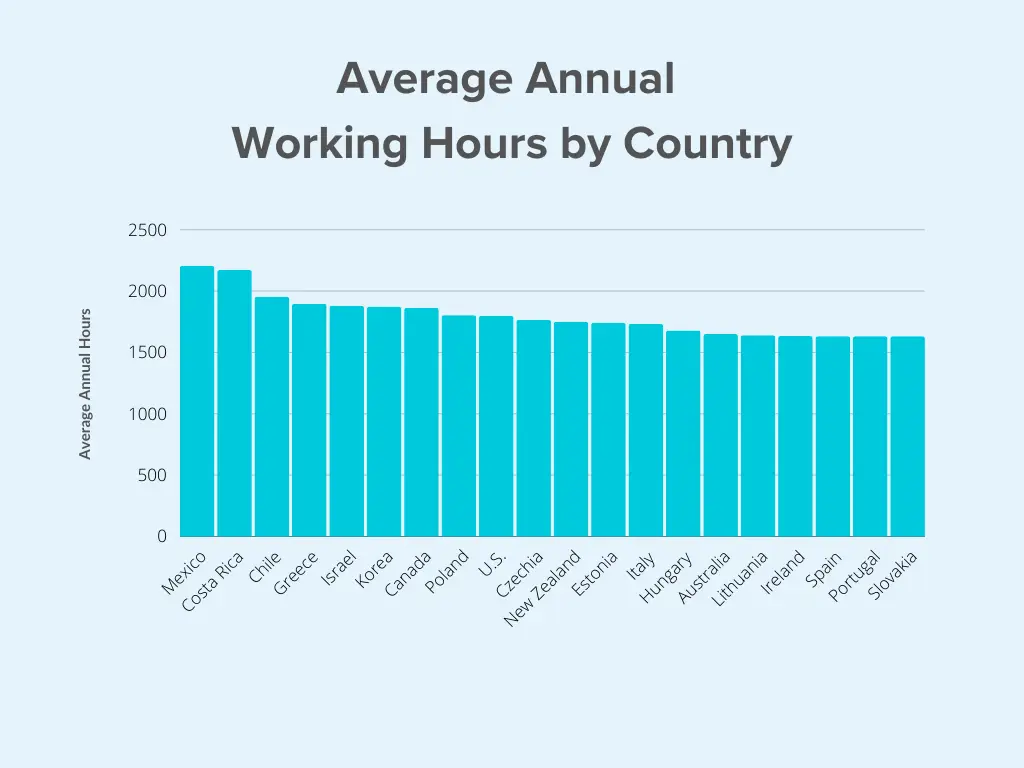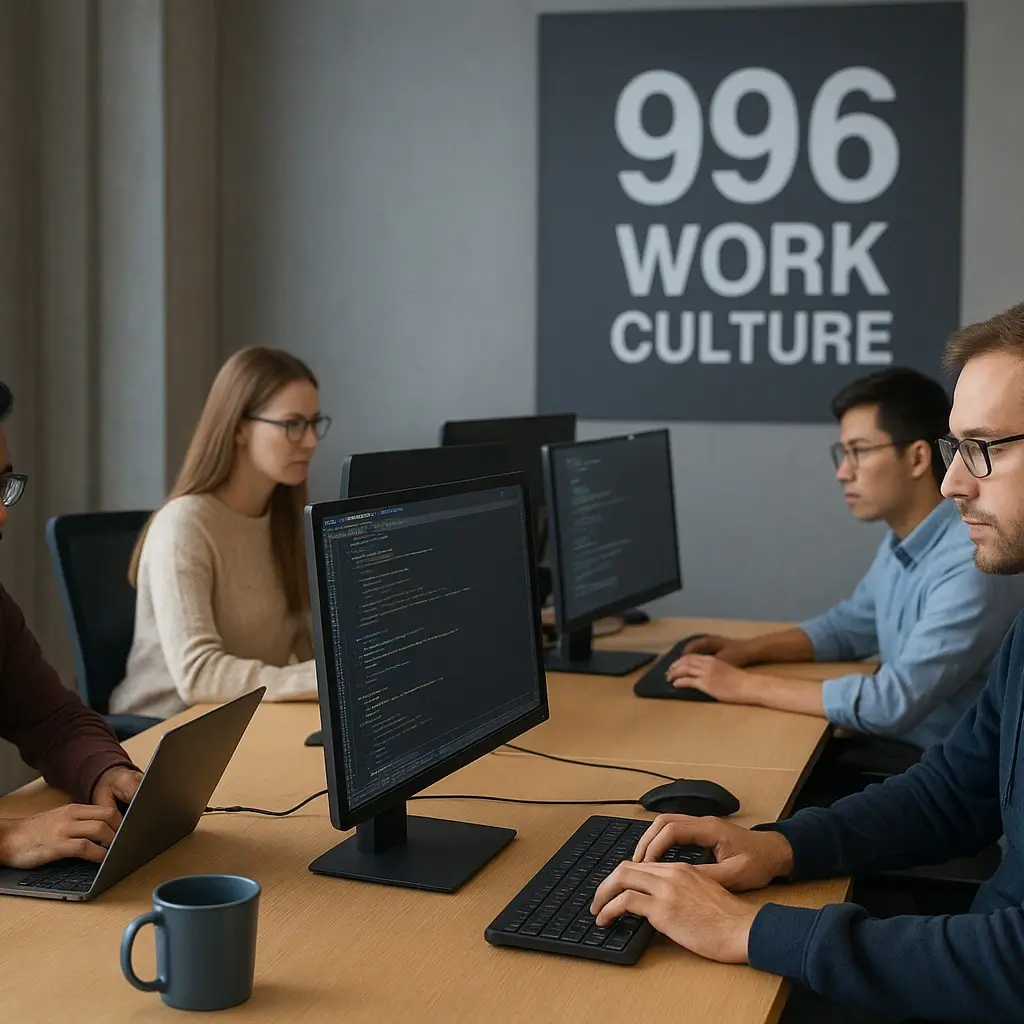A growing number of U.S. technology and artificial-intelligence startups are adopting the 9-9-6 work model—employees working 9 a.m. to 9 p.m., six days a week. Once common only in China and Japan, the 72-hour workweek is re-emerging in Silicon Valley and New York.

Analysts warn that the trend, driven by competition and investor pressure, could reshape American work culture and test labor protections.
U.S. Companies Adopt Intense 9-9-6 Work Model
| Key Fact | Detail / Statistic |
|---|---|
| Typical hours per week | ~72 hours |
| Origin of model | Chinese tech sector, early 2010s |
| U.S. trend | Rising in AI and software startups, 2025 |
What Is the 9-9-6 Model?
The 9-9-6 term refers to a 12-hour day, six days per week. It originated in China’s internet boom and was popularized by firms such as Alibaba Group Holding Ltd. and Huawei Technologies Co. Employees often viewed the schedule as both a badge of ambition and a source of exhaustion.
In 2021, China’s Supreme People’s Court declared such schedules illegal, yet enforcement proved difficult. Japan experienced a similar phenomenon decades earlier under the term karōshi, meaning “death from overwork.”
Why It’s Gaining Ground in the United States
The AI Gold Rush
Startups in artificial intelligence and advanced computing are competing fiercely for breakthroughs. “Every week counts in the race to build the next generation of AI,” said Dr. Hannah Levine, labor economist at the Massachusetts Institute of Technology. “That urgency translates into longer hours and blurred boundaries between work and rest.”
A Fortune investigation in August 2025 identified at least five venture-backed AI companies in California and New York advertising “70+ hours per week” in job listings. One San Francisco posting stated bluntly: “Expect long days and Saturdays. We’re building fast.”

The Founder Mindset
Founders describe the model as a necessity rather than exploitation. “We’re competing with teams in Asia that never sleep,” one startup CEO told Entrepreneur Magazine on condition of anonymity. “If we slow down, we’re obsolete.”
Investors, meanwhile, often reward rapid milestones over sustainable growth. According to the National Venture Capital Association, average time to product launch among AI seed firms fell from 18 months in 2022 to 9 months in 2025—a pace that often demands overtime.
Worker Experience: Pressure and Pride
Some employees see 9-9-6 as the price of ambition. “It’s brutal but exhilarating,” said Alex Nguyen, a software engineer at a machine-learning startup in Austin. “We’re working on something that could change the world. I just hope we don’t burn out before we get there.”
Others report severe fatigue. A 2025 Gallup poll found that 41 percent of tech professionals working more than 60 hours a week reported symptoms of burnout—twice the rate of those under 45 hours.
Labor psychologist Dr. Maya Peters from Stanford University cautioned that chronic overwork “creates a false sense of productivity. Output per hour drops after about 55 hours, while health risks continue rising.”
Legal and Ethical Questions
Under the Fair Labor Standards Act (FLSA), U.S. employees classified as “non-exempt” must receive overtime pay after 40 hours per week. But most startup engineers are salaried and exempt, placing them outside overtime protections.
“The law hasn’t caught up with the modern tech economy,” said James Rowe, spokesperson for the U.S. Department of Labor. “When employees log 70-hour weeks without compensation, it raises compliance concerns—even if they’re labeled exempt.”
The Occupational Safety and Health Administration (OSHA) lists fatigue as a workplace hazard, citing links between extended hours and accidents. While tech offices pose fewer physical dangers, the mental-health toll is significant.

The Health Equation
Studies by the World Health Organization (WHO) show that working 55 hours or more per week increases the risk of heart disease by 35 percent and stroke by 17 percent. Chronic stress also reduces sleep quality and cognitive performance.
Experts warn that glamorizing exhaustion can normalize unhealthy habits. “The 9-9-6 ethos celebrates burnout as dedication,” said Dr. Ryo Tanaka, researcher at the International Labour Organization (ILO). “That’s a regression from decades of progress in occupational health.”
International Contrast
While American startups flirt with longer weeks, several European countries are testing shorter ones. The United Kingdom’s 4-Day Week Pilot, run by Cambridge University, found that companies maintained productivity while reducing burnout by 65 percent. Iceland’s trials delivered similar results.
“This divergence shows two competing visions of the future,” said Dr. Levine. “Europe is optimizing for well-being; parts of the U.S. are optimizing for speed.”
Economic and Cultural Drivers
Cultural glorification of hustle—popularized through social media and entrepreneurial icons—feeds acceptance of extreme schedules. Phrases like “sleep when you’re dead” or “grind culture” circulate widely online, blurring the line between dedication and exploitation.
Economically, stagnant wage growth pushes some workers to equate hours with advancement. The Economic Policy Institute reports that inflation-adjusted tech wages rose only 2.3 percent from 2020 to 2025, while workloads expanded roughly 15 percent.
Corporate Response and Pushback
Not all companies are embracing the trend. Major firms such as Microsoft, Salesforce, and Atlassian reaffirm policies encouraging flexible hours and mental-health leave. “Extreme schedules don’t align with sustainable innovation,” said Jessica Carter, head of people strategy at Microsoft U.S.
Unions and worker-advocacy groups are also responding. The Tech Workers Coalition has launched a campaign urging the Department of Labor to audit overtime practices at venture-backed startups.
Related Links
Layoff Announcements Surge in October — Worst Month for Jobs in 22 Years
Macy’s Confirms Major Layoffs — Connecticut Distribution Center to Shut Down in January 2026
What Lies Ahead
Economists expect the 9-9-6 model to remain a niche but influential force. “It will not replace the standard workweek,” said Dr. Tanaka, “but its symbolism could pressure mainstream employers to demand more.”
The Pew Research Center notes a widening gap between high-intensity startup work and the broader American workforce, which increasingly values flexibility and remote options. Pew’s 2025 survey found 56 percent of workers would decline a pay raise if it required longer hours.
As automation expands, some experts predict the opposite trajectory—a future where machines absorb excess labor. Yet for now, the human cost of the 9-9-6 experiment remains uncertain.
Final Outlook
Whether the 9-9-6 work model becomes an enduring U.S. trend or a cautionary phase depends on how employers balance speed with sustainability. For now, its expansion highlights an unresolved question at the heart of modern capitalism: How much human time is a competitive advantage worth?





